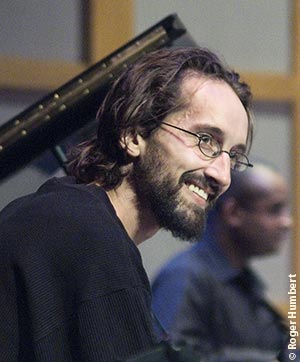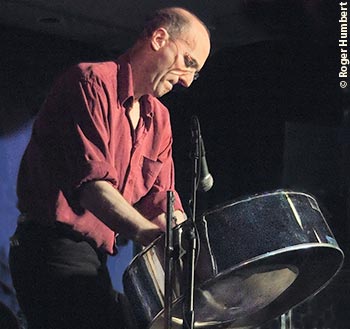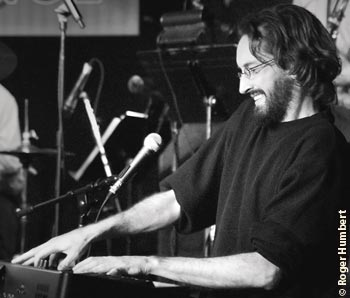| JL We’re both playing Caribbean jazz but we’re almost at opposite ends of the spectrum in a lot of ways, even though the music is coming from the same roots. When they’re playing with Andy Narell, the band has to find a whole other side of themselves as a group. Andy’s music is a lot quieter a lot more settled, it breathes and has a lot more space than the CaneFire stuff. In its esthetics, Andy Narell’s music is closer to what you traditionally think of jazz.
RH David Rudder, who had been sitting in the audience, was called to the stage during that set. You work with Rudder I believe…
JL I started working with David just before I left Trinidad. I played for about six months with his group Charlie’s Roots. Then I came back to Toronto to finish school and he moved here three months later. I’ve been working with David for about five or six years now, as his musical director and arranger, playing and travelling with him. David and Andy go way back, so that’s why Andy was able to ambush him like that and bring him up on stage.
RH What's next with CaneFire?
JL We’re working hard on new material right now, preparing for a new recording, that’s the focus.
RH We heard three new tunes during your set at Lula.
JL Yeah, we premiered one that I don’t have a name for yet and one called “Coconuts And Doubles” written by our trumpet player, Alexis Baro, and then the killer, the burner (laughs), I always have to write one insane tune. It’s patterned after a gospelypso but we crank the tempo to about triple what it would normally be, it’s called “Baptism By Fire”. That’s the big insane closer.
RH This was controlled chaos.
JL Yeah, bordering on complete chaos. I love this period when we’re playing new music for the second or third time, it’s all fresh and it’s the best it’s ever gonna sound. It might not be completely tight; the older stuff now is very very tight but there is a magic in the new stuff. I love it, I wish I could write faster so we could be always playing new stuff, but I’m just really slow.
I’ve done some travelling lately to Asia, to Venezuela and most recently to the Amazon so there are a lot of new sounds, new instruments and rhythms that I’m trying to see if they can be incorporated into the Caribbean jazz framework. So we’ll see how that goes.
RH You might have to start another band.
JL Yeah exactly, there might be another band but I’d really like to do it with this band, I really like where we’ve gotten to after playing together for two and a half, almost three years. Music is about expression and about connecting to the music and yourself and to the audience. You won’t necessarily achieve that connection playing someone else’s music, but over the course of playing my music for the past few years the other guys in the band are inside it. We’ve come together and defined our sound enough that they can feel the music is theirs as well so everybody is connecting and everybody is expressing now when we play together. This wasn’t happening before. Before, we were playing my music but now it feels more like our music. We’ve jelled as a band… I guess that’s what that’s called.
RH So where are your travels going to take you next?
JL Well, I’ve never been to Africa and I’m trying to get there. You see it’s difficult for me to travel because I don’t like to go anywhere for a short period of time. I wouldn’t go to somewhere like Africa for less than six months. It’s about clearing the schedule… and the bank account. I’m trying to get back to Burma as well and see what’s been happening there.
|





